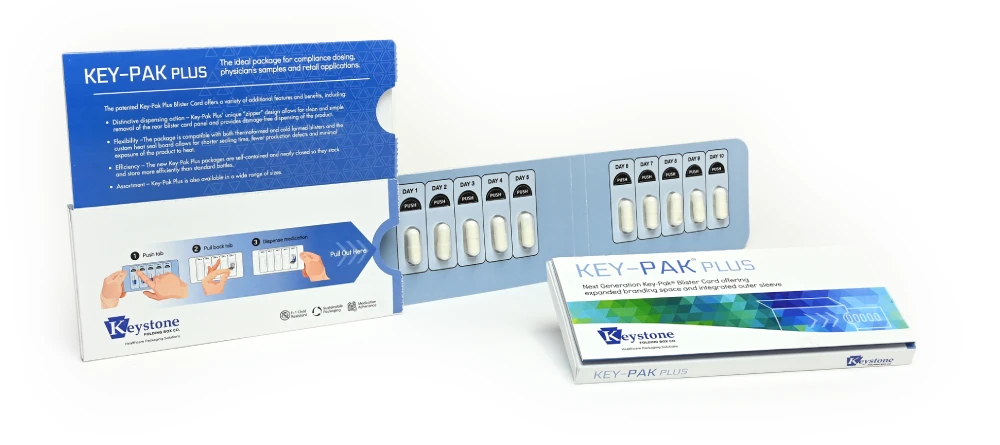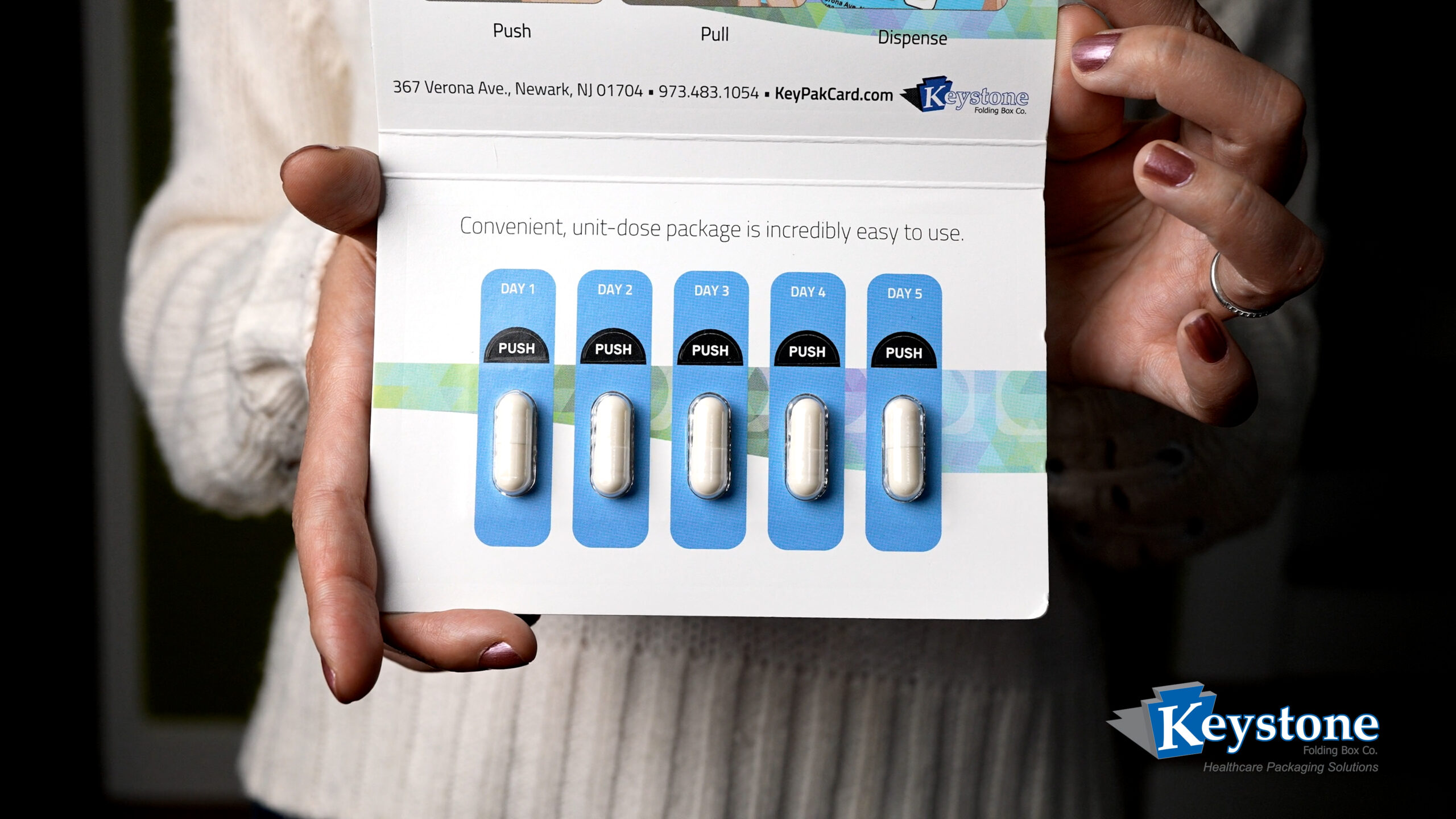
Atlas - Stock.Adobe.com
Navigating Trends in Secondary Packaging
Designers adopt value-added features, different materials, and enhanced coding technologies.
Secondary packaging for pharmaceutical products must navigate global and local challenges and address a myriad of demands with sustainability at the top of the list. Other secondary packaging trends stem from the need for more complex carton designs, kitting, and the incorporation of child-resistant, serialization, anticounterfeiting, or smart features. These needs are generating advances in coding, marking, and printing. There’s also a growing reliance on suppliers for design assistance so cartons, labels, and leaflets run efficiently on the packaging line, protect the product throughout the supply chain, and meet the requirements of regulators, drug makers or contract manufacturing/packaging organizations, caregivers, and patients.
An emphasis on sustainability
Consumer preference is a driving force in the attention given to sustainability. Erwin Klünder, head of Sales, Healthcare & Flexibles at Graphic Packaging International (GPI), says, “Consumers want to make more sustainable purchasing choices, a sentiment shared by patients in the pharmaceutical industry (1). Those patients expect companies to help them achieve that goal by providing the right products—including the packaging.”
In line with this sustainability focus from the consumer as well as increased pressure from regulators to reduce waste, “brand owners are trying to showcase their commitment to sustainability,” reports Ward Smith, director of Marketing & Business Development for Keystone Folding Box.
Marga Romo, head of Marketing at MM Packaging, a division of MM Group, notes as new products are developed, “… pharma businesses must have absolute awareness of the product’s total environmental footprint, before the product hits the market. This includes an assessment of the full supply chain for Scope 3 emissions. … we factor this into our manufacturing operations by prioritizing resource-optimized production and recyclability … and moving toward a true circular economy.”
Sustainable packaging involves reducing or eliminating plastic, lightweighting and downgauging, transitioning to more-recyclable packaging materials to achieve a circular economy, adopting renewable paper-based options, rightsizing (cube efficiency), and minimizing the number of packaging sizes and configurations, adds John Lackner president/COO of Colbert Packaging.
An exception to adopting a more-recyclable material like paperboard is products destined for surgical areas. For this environment, pharmaceutical manufacturers want a material that looks clean. “It’s all about appearance and cleanliness,” says Paul Glintenkamp, vice-president Sales at Aphena Pharma Solutions, a contract pharmaceutical manufacturing and packaging company. Some drug makers have overcome this concern by specifying paperboard that is coated on both sides.
Advances in coding, marking, and printing
Increasing regulation is spurring demand for enhanced coding, serialization, and pre-serialization technologies to provide product security and fight counterfeiting. This has prompted innovations in carton design as well as coding, marking, and printing functions on packaging lines.
Keystone Folding Box frequently provides guidance about graphic changes to optimize laser or inkjet printing of serialization, lot, and expiry information. In some cases, Smith says, customers are requesting the addition of QR codes that direct patients to additional information or instructions about the medication.
Aphena Pharma Solutions, which offers three levels of serialization, assists customers with package and carton design to ensure serialization will not disrupt packaging line efficiency. This means designing the cartons so codes will be readable without extra manipulation. “Marketing professionals and graphic designers don’t always think about how internal packaging systems or bundling requirements may complicate online code reading,” explains Glintenkamp.
Additionally, concern about code clarity and smudge-free readability is expanding interest in laser coding. “[Aphena] recently added laser coders on two lines and is doing shipping studies to verify the laser-printed code is less prone to scuffing than an inkjet-printed code,” says Glintenkamp.
Laser coding, which is considered to be cleaner, faster, and more efficient than alternative technologies, is the focus of MM Packaging’s Clear Code pre-treatment coating that enables precise and durable high-contrast patterns to be applied using carbon dioxide, fiber, or yttrium aluminum garnet laser energy.
GPI’s highly flexible serialization service meets the demands of the most recent drug traceability specifications and can accommodate longer or more complex coding requirements, including compliant European Union (EU) codes, Chinese C128 codes, veterinary codes, and more country-specific formats, such as Italian Bollini labels.
Colbert Packaging also can address an array of coding needs including item-level identification and traceability based on country of origin and helps ensure folding cartons are ready to receive serialization codes on the packaging line.
Furthermore, coding, marking, and printing technologies enable the late-stage customization needed as lot sizes shrink to address the growing availability of patient-specific drugs and treatments for rare diseases. “Packaging processes need to ensure individual information can be printed in highly efficient and automated ways (for example, specific language versions for countries with lower volume demands),” says Klünder.
Innovative designsNew folding carton designs and the evolution of wallet packs address the demand for sustainable, child-resistant, and smart packaging options. Sustainability can be enhanced by changing materials to incorporate fiber-based content that can meet performance requirements while increasing the circularity of the package. “These materials can be used alone or combined with barrier coatings or films to create hybrid solutions,” reports Klünder. Additionally, print finish advances using metallic effects or water-based inks can replace metallized polyethylene terephthalate/paperboard laminates with a more-recyclable paperboard.
Adoption of wallet packs, which help patients take each dose correctly, will continue to grow particularly for products that involve complex dosing regimens or serious warnings about proper use and contraindications. For example, the Key-Pak F1 wallet card from Keystone Folding Box holds blister packages of solid dosage forms, provides child resistance, and allows for the integration of smart technology that monitors and records data related to dosage removal.
One smart, child-resistant design integrates the Key-Pak wallet with electronics from Schreiner Medipharm to provide a real-time e-diary for dosing history. The integration of conductive trace-patterns linked to each of the cavities generates data the instant the patient removes a dose. Details, such as time and date of removal and cavity location, are stored within the onboard electronics and can be transmitted by near-field communication (NFC) or Bluetooth technology for precise patient compliance tracking. It’s also possible to send medication dosing reminders to patients and to adjust therapy plans. When used in combination with special software, central tracking as well as data documentation and analysis are possible. The design accommodates virtually any dosing regimen by customizing the number, arrangement, and shape of the blister cavities. The improved data quality can expedite the clinical trial process and accelerate the approval of a new drug (2).
Another design from Keystone Folding Box, the Ecoslide-RX blister pack wallet, provides a child-resistant alternative to high-density polyethylene vials and amber polypropylene prescription vials, which are rarely accepted in US recycling streams. According to Smith, the package is engineered to use the least amount of film and foil, maximize manufacturing efficiencies, and run at high speeds on existing equipment. He reports, “The switch from a bottle/vial to an Eco-slide-RX blister package results in significantly reduced plastic—in some case up to 75%. Even more sustainable benefits are achievable by utilizing newer recyclable blister materials.”
Colbert Packaging also offers paper-based alternatives to plastic packaging. Its water- and agri-based One Clean Carton offers low migration, low odor, and low levels of volatile organic compounds. Like many secondary packaging suppliers, the company embraces sustainable practices across its supply chain, using wood fiber from certified sources. In addition, “investment in wind RECs (renewable energy credits) supports [Colbert’s] sustainability program, and [its] participation with the EcoVadis sustainability ratings platform enables [the company] to continually address and improve overall sustainability efforts,” says Lackner.
What’s next?
Stakeholders predict the demand for sustainable packaging will intensify in 2024–2025 as the sector grapples with evolving legislation, including the EU’s proposed Packaging and Packaging Waste Regulation (PPWR), United Kingdom Green Claims Code, EU Green Claims Directive, and extended producer responsibility schemes being introduced around the world.
Regulations and national and international collaborations will propel efforts to be more sustainable. For example, the US Plastics Pact is bringing together the plastics value chain to reconsider the design, use, and reuse of plastics. “The overarching objective is to diminish plastic waste in our environment and establish a circular economy for plastics,” says Smith.
Sustainability will take on even greater urgency when the PPWR is approved because it brings the recyclability of pharmaceutical packaging under the scope of packaging waste legislation for the first time. Klünder explains, “This means healthcare packaging must be designed to facilitate efficient recycling and be easy to collect and sort into separate waste streams. It must also result in secondary material that is of sufficient quality to substitute for primary material. Paper-based materials, used in cartons and corrugate, are the obvious choice to help the industry rethink its secondary and tertiary packaging. They are already capable of being recycled at scale—figures show 82.3% of fiber-based packaging is recycled in Europe (3), along with 81% in the USA (4)—and can easily meet Design for Recycling criteria.”
“We believe that the initial emphasis will be on reducing the overall plastic content in pharmaceutical packaging, [and] … transitioning to easily recyclable cartons,” says Romo of MM Packaging, which is developing paperboard options with recycled content with the help of sister company, MM Board & Paper.
Beyond sustainability, other growth areas include a continued emphasis on quality with broader use of vision systems at all stages of secondary packaging production and the continued adoption of smart packaging technologies. Increasingly based on radio frequency identification and NFC technology, smart packaging can turn individual packaging units into traceable data points, unlocking new heights of transparency and enabling pharma businesses to make data-driven decisions regarding the supply chain. “The … pharma sector will see smart, connected packaging playing a more central role in preserving patient safety,” predicts Romo.
Anticounterfeit and security features will continue to evolve to protect products, brands, and consumers. Layered overt and covert anticounterfeit technologies will be needed to discourage counterfeiting of rapidly growing, high-value products like anti-obesity treatments.
Growth in self-administered products will impact packaging design and supply chain processes. “A patient-centric approach to packaging design will be key to enhancing the patient experience and enabling accessibility for people with different physical needs or reduced motor capabilities,” says Klünder.
With all this activity and the expanding development of biosimilars and new drugs, Glintenkamp predicts contract manufacturing and packaging capacity will tighten. As a result, contract manufacturing and packaging organizations will need to boost their workforce and, in some cases, add capacity.
References
1. Shorr Packaging, The 2022 Sustainable Packaging Consumer Report. White Paper. July 20, 2022.
2. Schreiner MediPharm. Schreiner MediPharm Enables Digital Adherence Monitoring with New Child-Resistant Smart Blister Wallet. Press Release. Nov. 28, 2023.
3. 4evergreen. A Journey through Recycling of Fibre-Based Packaging. 4evergreenforum.eu. Accessed Dec. 7, 2023.
4. Two Sides North America. Paper-Based Packaging Is Recycled More than Any Other Packaging Material. twosidesna.org. Accessed Dec. 7, 2023. PT
About the author
Hallie Forcinio is packaging editor for Pharmaceutical Technology.
Article details
Pharmaceutical Technology
Vol. 48, No. 1
January 2024
Pages: 22–25



